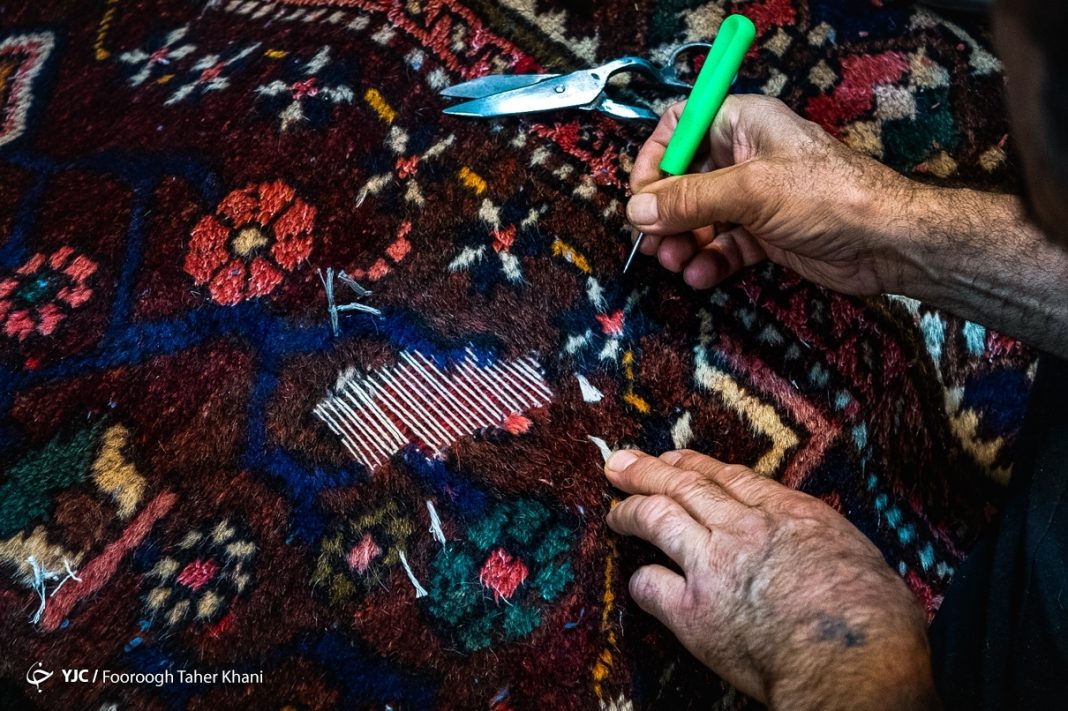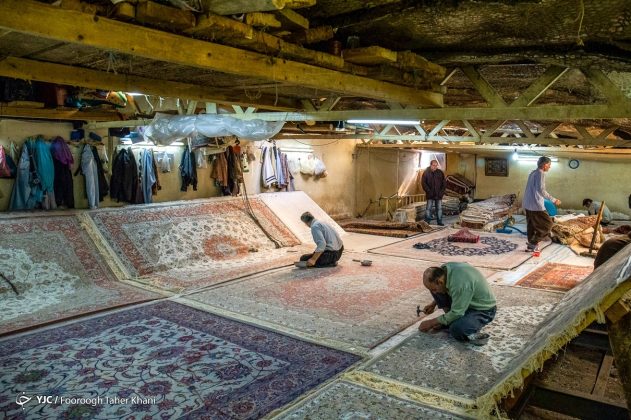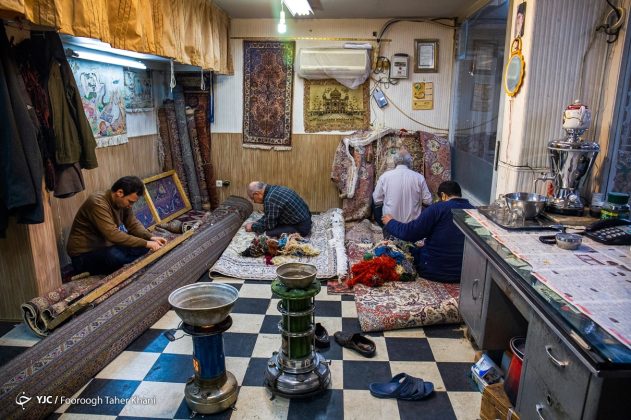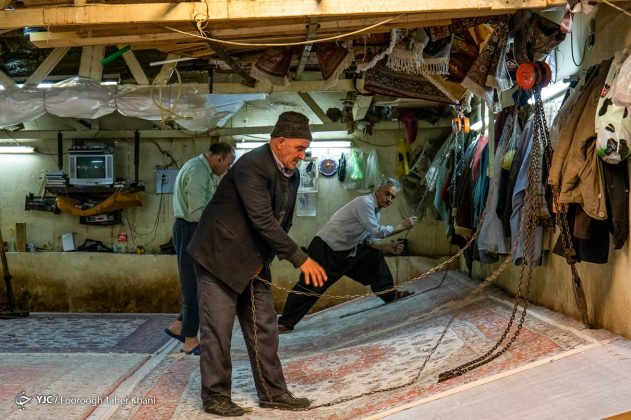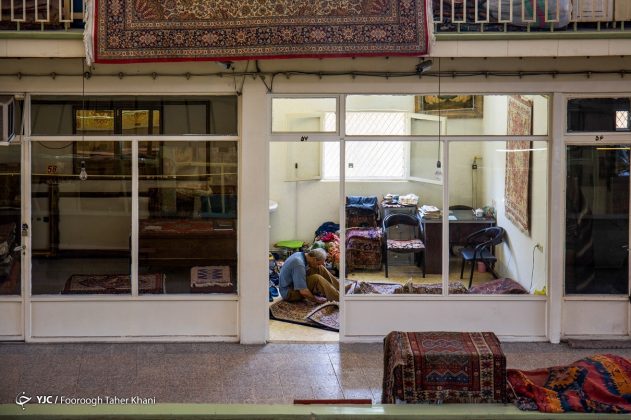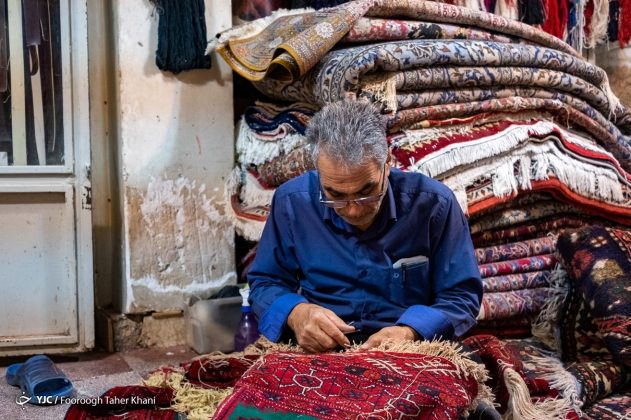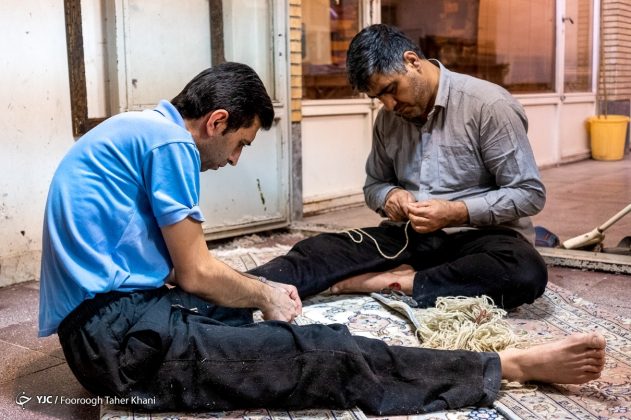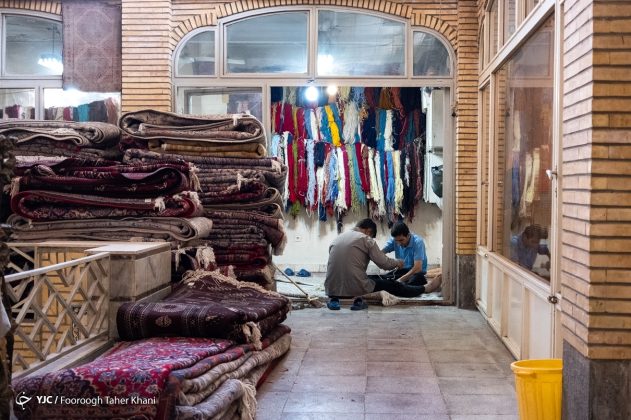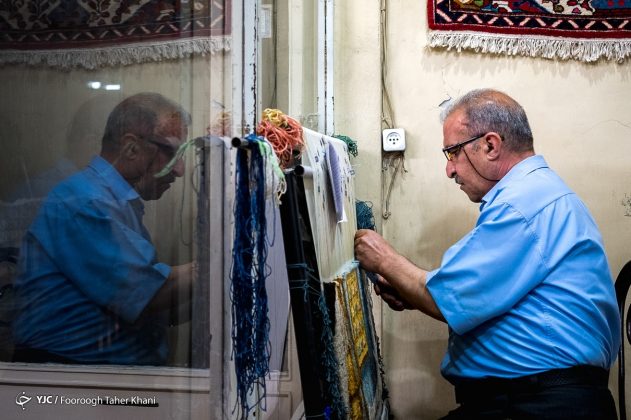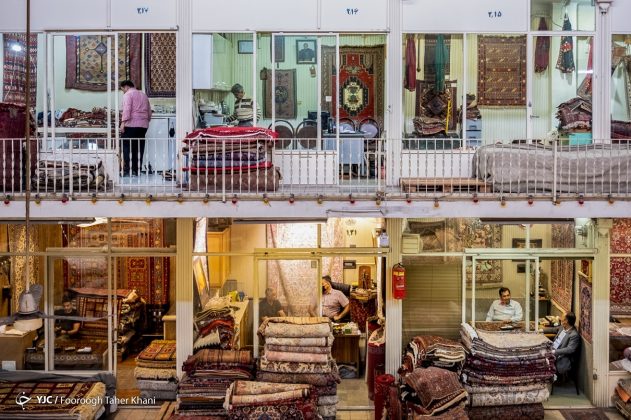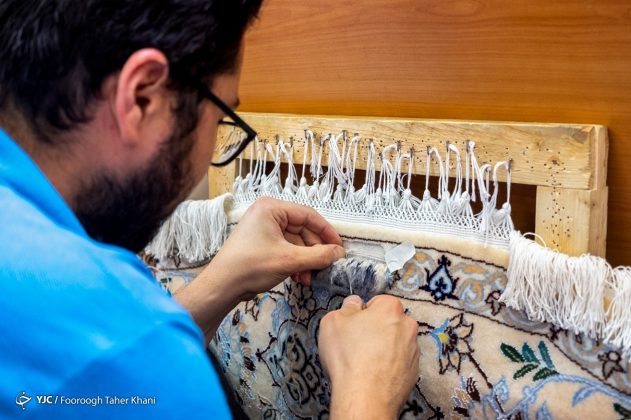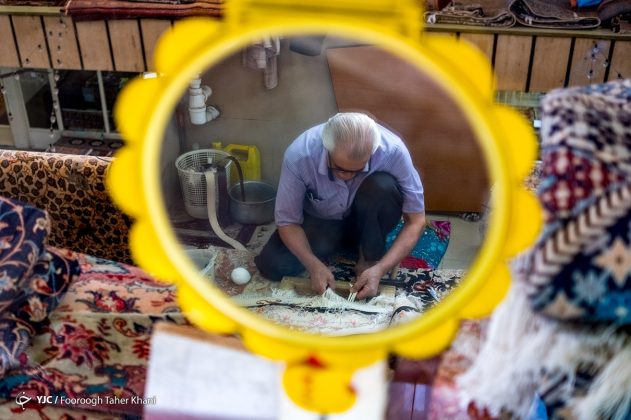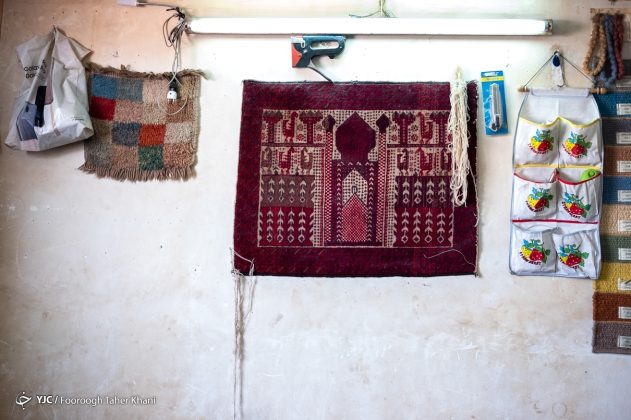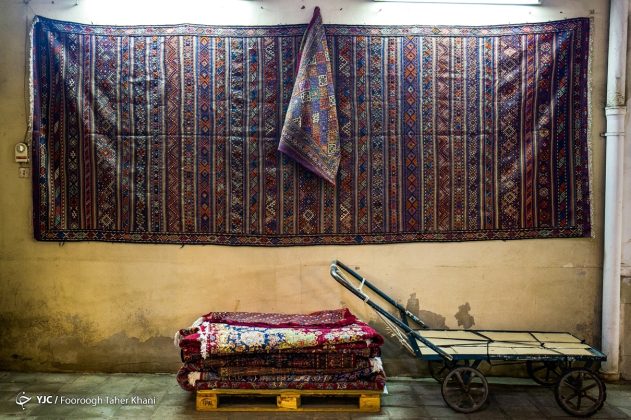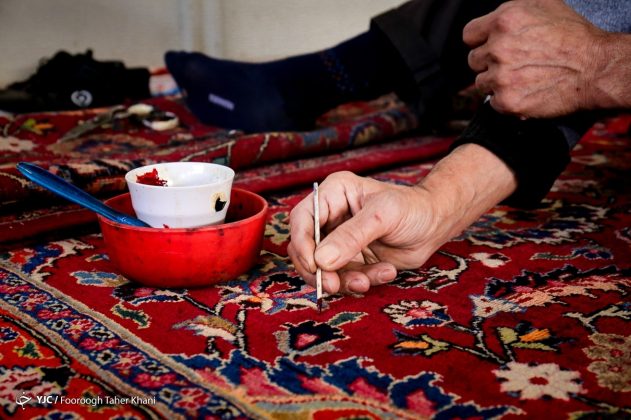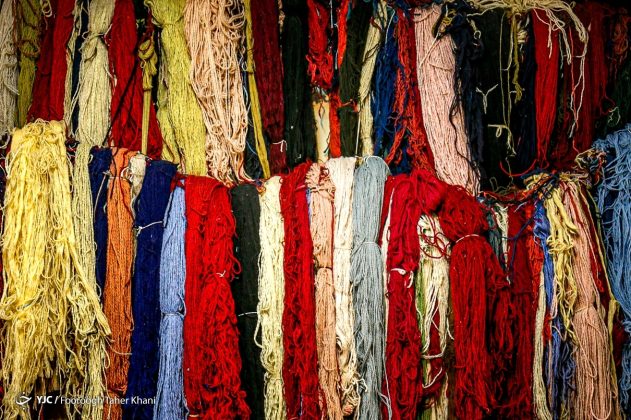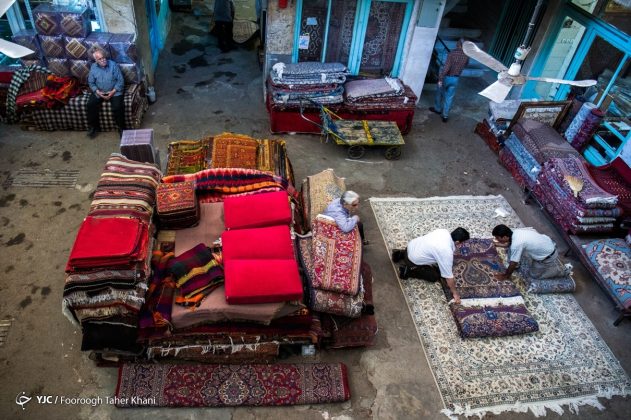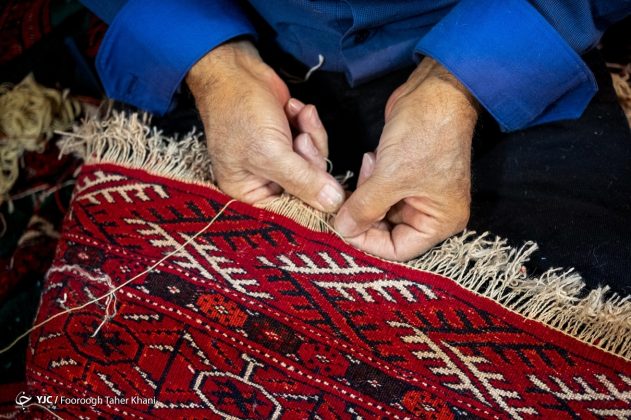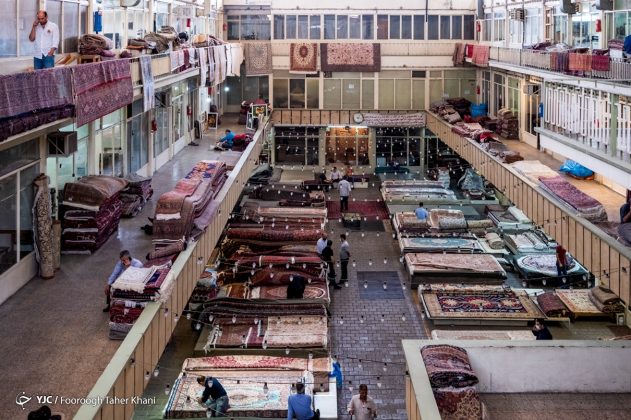The value of darning becomes clearer when an expensive carpet is damaged and is in need of repair. Damage can be in the form of a tear, a burn, and fabric decomposition. A darner repairs such damage to a carpet.
In the middle of Tehran’s crowded bazaar, there are quiet halls or timchehs where unknown artists excelling at the darning of handwoven carpets work — masters who darn expensive and valuable carpets with panache and give them another life.
The history of darning in Iran
The craft of darning was born simultaneously as carpet weaving, but there is no word of this craft in history books. Even so, it is through this craft that such damage as askew lines and tears are repaired. The duty of a darner is to make a carpet perfect enough to be presented to buyers.
Today, with the advancements in human societies, the craft of rug darning has advanced considerably as well and has turned into a specialized and difficult task and an art form.
Of course, petty repair such as sewing the long margins, weaving the roots, and trimming the edges of the carpet can be done at home, but such work as darning and removing wrinkles on a carpet can only be carried out by professional darners.
The tools of darning
The tools of darning are the same ones used in carpet weaving. They include:
- Knives with a hook
- Scissors and iron combs
- Threads and needles
- Stitching awls
- Thimbles
- A small wooden frame
- Wax
- Pliers
- Kneads of wool and cotton and silk (depending on the type of carpet)

How to darn a carpet
Here we take an only cursory look at the stages of darning:
- The rug is often washed before darning. The carpet is then installed backwards on the frame.
- Then, the darner starts repairing any damage using threads that are the same color as those of the rug. If the threads of the rug are discolored, you have to use similarly discolored threads. The darner picks the color by looking at the threads on the length margins.
- If the piles either at ends or the other sides of the rug are damaged, they should be repaired.
- Some types of repair work has its own methods, such as moth damage, which requires experience and skill on the part of the darner.
- Tears and burns on the rug have to be darned with care. It is important for the pattern and color to match those of the original rug; otherwise, the discrepancy would be visible and would devalue the rug.
- To repair any ripping, one should mark the spot on the back of the carpet with a marker, and if it is very deep, it has to be cut out entirely using a cutter and then be darned separately.
- In order for the colors of the different parts of the rug to match one another, the darner should have some knowledge of dyeing, so he won’t be hindered in the dyeing stage.
- Finally, if the color of the carpet doesn’t match the other threads, the darner should use the same colors in scissoring, warp winding, and ironing once the darning is done to reach the desired result.
The disadvantages of darning a rug
It can sometimes be very expensive to have a rug darned, and some may find it unaffordable.
Darning using such superficial methods as coloring with markers would only be temporary and the discoloring would reemerge after some time.
Darning may also devalue a rug. A handwoven rug that is not darned has more value.
The benefits of darning a rug
Darning a carpet has just enough value as repairing historical and artistic artifacts, and is considered an artistic and research-based activity in the field of cultural heritage.
More images of carpet darning
The images that follow show artists in the field at work. They were published by the Young Journalists’ Club (YJC)
